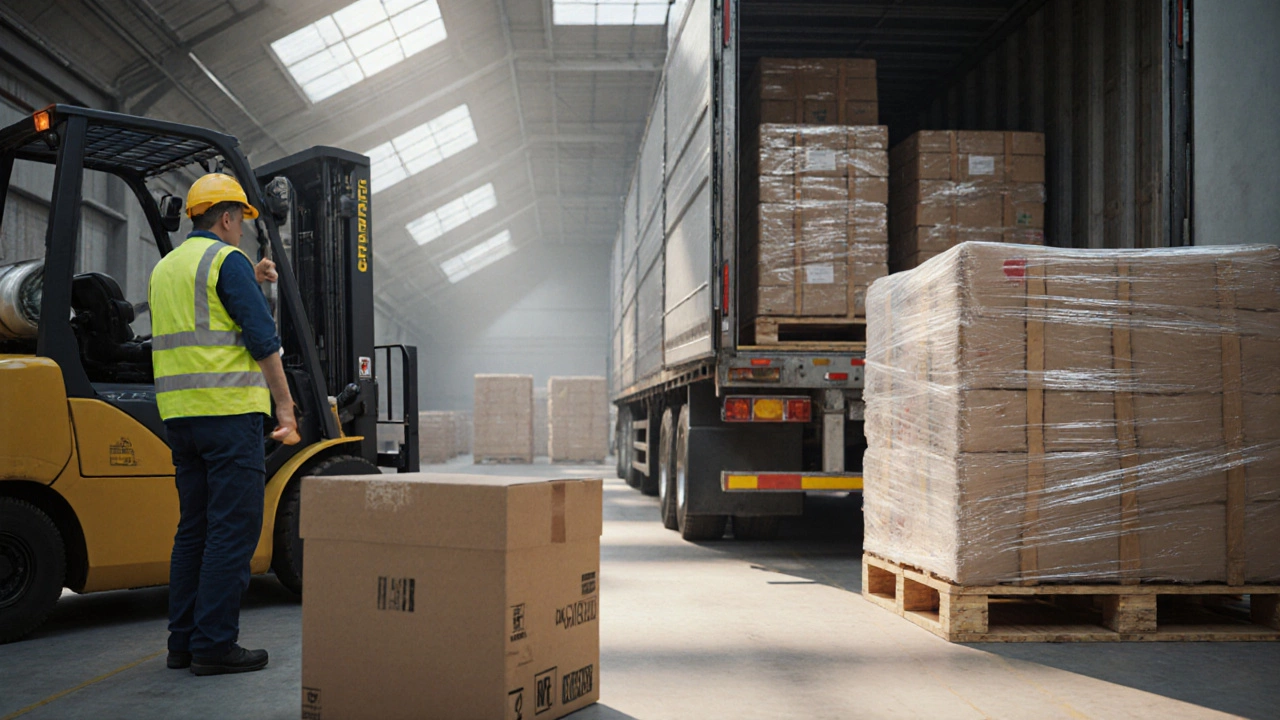Freight Pallet: The Backbone of Fast, Secure Shipping
When working with Freight Pallet, a standardized platform that lets businesses move boxed goods safely on trucks, trains, or ships. Also known as pallet load, it reduces handling time, protects items from damage, and streamlines load planning.
Another key player is Freight Forwarding, the service that coordinates international movement of pallets, containers, and bulk cargo. Freight forwarding links the pallet to global routes, handles customs paperwork, and secures the best carrier rates. In short, freight pallet logistics requires freight forwarding expertise to turn a local load into a worldwide shipment.
Why Same Day Delivery Relies on Pallet Efficiency
For businesses that promise same‑day delivery, the speed of pallet handling can make or break a promise. Same Day Delivery, a service that moves parcels from sender to recipient within hours, depends on rapid pallet loading, precise route planning, and real‑time tracking. When pallets are pre‑stacked and labeled correctly, couriers can load trucks faster, cut dispatch times, and hit tight delivery windows. That’s why many same‑day couriers treat pallet management as a core competency, not an afterthought.
Warehouse operations also shape how pallets move. Warehouse Management, the set of processes and software that organize inventory, picking, and shipping, influences pallet turnover. A well‑tuned warehouse uses slotting rules, barcode scanners, and automated conveyors to get pallets onto the dock quickly. The faster a pallet exits the warehouse, the sooner it joins the same‑day network or the freight forwarding chain.
These entities interact in clear ways: freight pallets encompass standardized dimensions; freight forwarding requires those dimensions to negotiate carrier space; same‑day delivery benefits from efficient pallet loading; and warehouse management enables the whole flow. Understanding each link helps you avoid bottlenecks and keep costs low.
Let’s look at a few practical tips. First, choose the right pallet size for your product mix – a 48"×40" pallet fits most UK trucks, while a 48"×48" pallet suits European hauls. Second, label every pallet with a scannable QR code that ties back to your order management system; this cuts manual checks and speeds up both warehouse and carrier steps. Third, work with a freight forwarder who offers real‑time visibility, so you can see exactly where each pallet sits in the supply chain.
When you combine these practices, you get a smoother end‑to‑end journey: the warehouse loads a correctly sized, well‑labeled freight pallet; the freight forwarder books the optimal carrier; the same‑day courier pulls the pallet for rapid dispatch; and the customer receives the order on time. This chain reduces damage, saves fuel, and improves your brand’s reliability.
Below you’ll find a curated set of articles that dig deeper into each piece of the puzzle. From verifying real shipping companies to mastering next‑day options, from warehouse software choices to understanding courier fees, our collection covers the full spectrum of pallet‑centric logistics. Browse the posts to sharpen your strategy, avoid common pitfalls, and keep your freight pallets moving fast.
Understanding Pallet Delivery: Definition, Process, and Costs
Learn what pallet delivery is, how it works, key cost factors, benefits, and tips for choosing the right logistics provider in the UK.
© 2025. All rights reserved.

